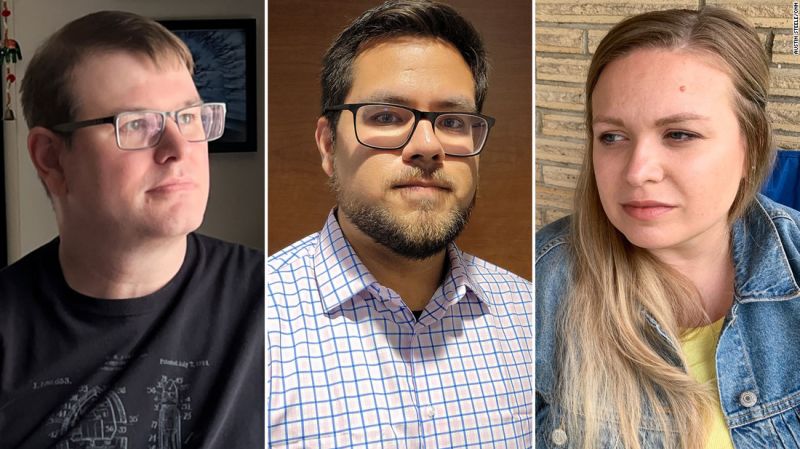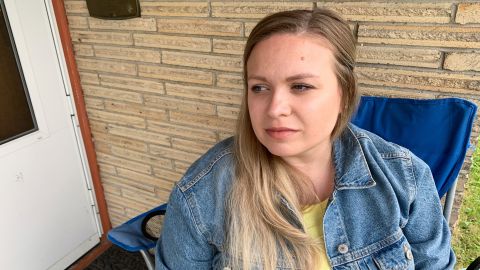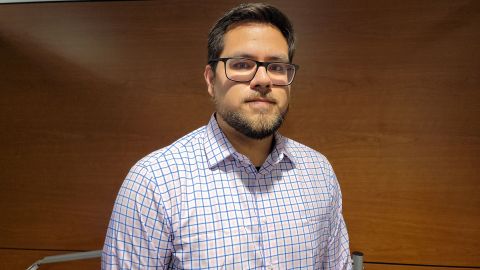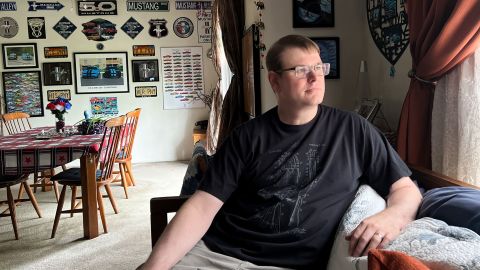‘We are in limbo:’ Student loan borrowers still face months of uncertainty about Biden’s forgiveness program | CNN Politics

Washington
CNN
—
More than 40 million federal student loan borrowers could be eligible for up to $20,000 in debt forgiveness, but they will likely have to wait several more months before the Supreme Court rules on whether President Joe Biden can implement his proposed relief program.
The Supreme Court heard oral arguments last week in two cases challenging Biden’s student loan forgiveness program, but justices aren’t expected to issue their decision until late June or early July.
When the ruling comes will also determine when federal student loan payments, which have been paused due to the pandemic since March 2020, will restart.
Some borrowers have been anxiously waiting for years to see if Biden would fulfill his campaign pledge to cancel some federal student loan debt. The president finally announced a forgiveness plan last August.
But after 26 million people applied, the program was blocked by lower courts in November – before any debt could be canceled.
“In some ways, it feels like we are one step closer now that they’ve heard the oral arguments, but until a decision is made, it still feels like we are in limbo,” said Lindsay Clausen, who has about $68,000 in student loan debt and works as an instructional designer at a university.

Clausen, 33, filed for relief from Biden’s forgiveness program last fall as soon as the application was open, hoping the forgiveness would help her and her husband save for a new home and expand their family.
“I felt relief, and then it was like a rug was pulled from underneath me,” Clausen said.
“Whichever way SCOTUS (Supreme Court of the US) decides to rule, it will at least be nice to have an answer,” she added.
The Biden administration has estimated that more than 40 million federal student loan borrowers would qualify for some level of debt cancellation, with roughly 20 million who would have their balance forgiven entirely, if the forgiveness program is allowed to move forward.
But not everyone with a federally held student loan would qualify.
Individual borrowers who earned less than $125,000 in either 2020 or 2021 and married couples or heads of households who made less than $250,000 annually in those years could see up to $10,000 of their federal student loan debt forgiven. Those with higher incomes would be excluded.
If a qualifying borrower also received a federal Pell grant while enrolled in college, the individual is eligible for up to $20,000 of debt forgiveness. Pell grants are a key federal aid program that help students from the lowest-income families pay for college, but these borrowers are still more likely to struggle paying off their student loans.
Student debt cancellation would deliver financial relief to millions of Americans, potentially helping them buy their first homes, start businesses or save for retirement.
But those who have already paid off their student loans, or chose not to borrow money to go to college to begin with, would get nothing. And the estimated $400 billion cost of canceling some debt would shift to all taxpayers.
At last week’s hearing, several of the conservative justices questioned whether that tradeoff is fair, while liberal Justice Sonia Sotomayor pushed back, arguing how many borrowers “don’t have friends or families or others who can help them make these payments.”
The back-and-forth on fairness touches on one of the biggest complaints about the nation’s higher education system: many people feel they need to go to college, and as a result borrow money, to get ahead.
Angel Enriquez, a 30-year-old meteorologist with about $61,000 in student loan debt, is one of those people.

His parents, immigrants from Mexico, couldn’t afford to help him pay for college. Enriquez was wait-listed at a state school that had a meteorology program, so he instead enrolled at a more expensive school out of state. He is now pursuing a master’s degree, which he felt he needed to stand out in a competitive industry.
“When you talk about fairness, it’s a complicated argument,” Enriquez said.
“But if you talk to someone who comes from poverty, or someone who’s a person of color, they are going to benefit from the forgiveness program the most because they’re the ones that have to jump through extra financial hoops in order to get where everyone else in the educated country is,” he said.
For some students, college degrees do not deliver the step up in the world they hoped for.
Even though Blake Goddard worked part-time jobs while in college, he still had to borrow nearly $90,000 for his bachelor’s degree in network communications management from DeVry University. In an effort to land a higher-paying job in the information technology industry, he then earned his master’s degree, borrowing another $44,000.
Despite those degrees, most of his jobs have been temporary contract positions, and many of his co-workers opted for getting lower-cost IT industry certifications rather than a four-year degree.

Meanwhile, the Department of Education has found that DeVry University, a for-profit college, misled at least 1,800 borrowers with false advertising about job placement rates.
While Goddard, 45, considers himself “one of the lucky ones” who would qualify for $20,000 of debt relief, the cancellation wouldn’t make too much of a dent in his more than $150,000 balance.
His debt, Goddard said, is “so detrimental” to his American dream, which was to buy a house and have a family.
“I was stupid enough to fall for it,” Goddard said about taking out student loans.
“I wish we could make it so nobody else in this country falls into the same trap,” he added.
Now, he’s committed to helping others avoid borrowing so much money for college and volunteers with an organization that helps students pursue careers in STEM fields.
One criticism of Biden’s one-time forgiveness program is that it would do nothing to address the cost of college for future students.
A more permanent solution to the college affordability problem would have to be created by Congress, but lawmakers have failed to pass any sweeping measure. A provision to make community college free was dropped from Biden’s Build Back Better agenda before it came to a vote in the House in 2021.
The Biden administration is also working on changes to existing federal student loan repayment plans, which don’t need congressional approval, and that aim to make it easier for borrowers to pay for college.
The Department of Education is currently finalizing a new income-driven repayment plan to lower monthly payments as well as the total amount borrowers pay back over time. In contrast to the one-time student loan cancellation program, the new repayment plan could help both current and future borrowers.
Additionally, in July, changes will be made to the Public Service Loan Forgiveness program, which allows certain government and nonprofit employees to seek federal student loan forgiveness after making 10 years of qualifying payments. The changes will make it easier for some borrowers to receive debt forgiveness.
If the Supreme Court ultimately gives the student loan forgiveness program the green light, it’s possible the government will begin issuing some debt cancellations fairly quickly. The administration has said it already approved 16 million applications for relief.
But several of the conservative justices expressed skepticism last week about whether Biden has the power to implement his student loan forgiveness program.
Lawyers for the government have remained confident that their plan is legal. They point to a 2003 law passed after the September 11, 2001, terrorist attacks that grants the secretary of education power to make sure people are not worse off in respect to their student loans in the event of a national emergency.
“I’m confident we’re on the right side of the law,” Biden told CNN a day after the oral arguments when asked if he was confident the administration would prevail in the case. “I’m not confident of the outcome of the decision yet.”
If the Supreme Court strikes down Biden’s student loan forgiveness program, it could be possible for the administration to make some modifications to the policy and try again – though that process could take months.
The pandemic pause on payments will remain in effect until either 60 days after the Supreme Court’s decision, or late August – whichever comes first.
Share this news on your Fb,Twitter and Whatsapp
Times News Network:Latest News Headlines
Times News Network||Health||New York||USA News||Technology||World News